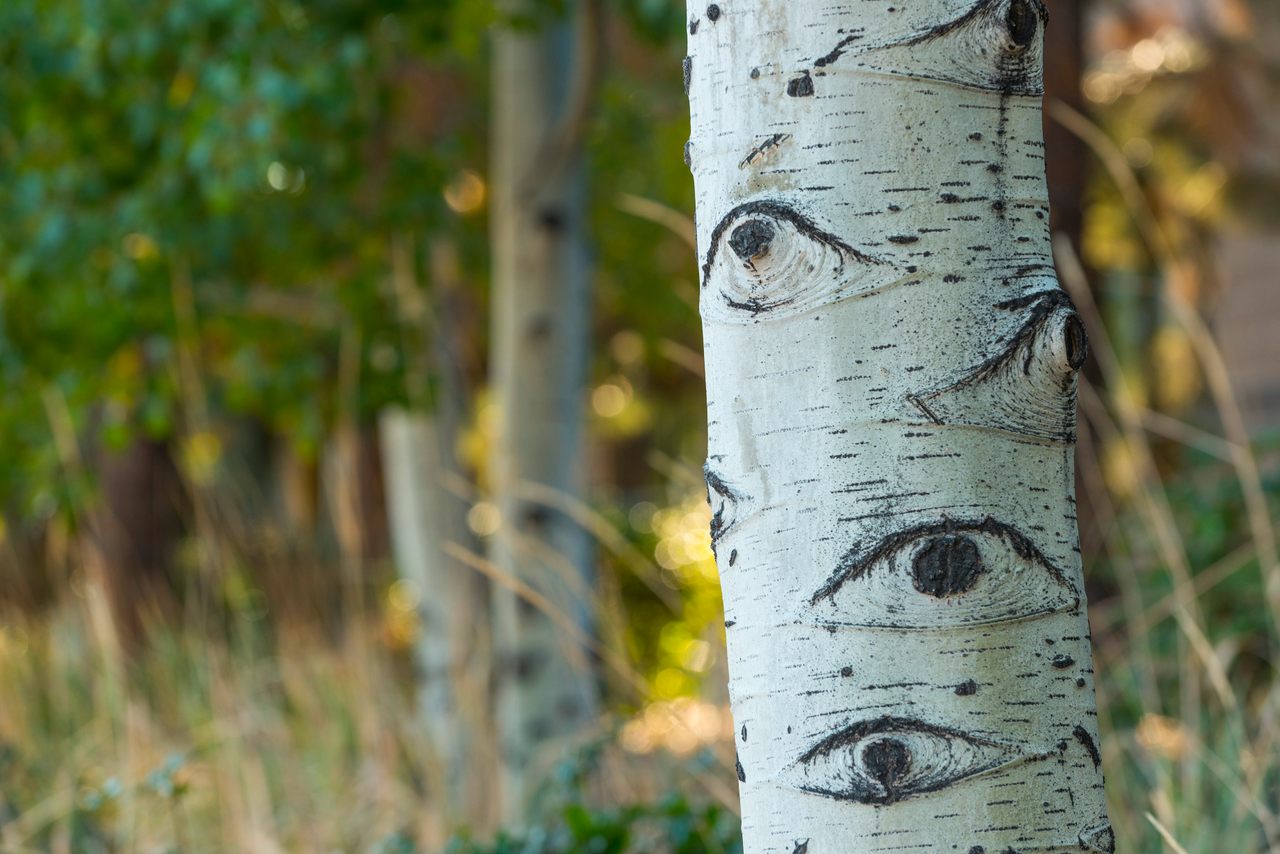Tree Eyes Can Help Us Find Our Way
Natural navigation expert Tristan Gooley made a surprise discovery exploring a rewilded WWII airfield.
As part of our Atlas Obscura Goes to Summer Camp special package, we’re revisiting stories that have captured the summer camp vibe or explored some of its more unique subcultures. Enjoy this curated classic! Excerpted with permission from How to Read a Tree: Clues and Patterns from Bark to Leaves, by Tristan Gooley. Publishing May 2, 2023 by The Experiment. All rights reserved.
Late last summer I was exploring a nature reserve called Snitterfield Bushes near Stratford-upon-Avon in Shakespeare country, in the center of England. I smiled on spotting some valerian flowers, a sign that there are rocks or concrete in the soil—the area has a wild feel, but that’s recent: It stands on an old Second World War airfield.
After a long, fruitful day of investigating a fascinating pocket of nature, I was looking for a spot to spend the night. The trees, flowers, and mosses confirmed what I had started to suspect: The ground was too damp for a comfortable night. My shoulders sagged a touch as I conceded to myself that I would need to move on to a drier spot. This was a little disappointing near the end of a long day outdoors, so I sat on an old stump for a snack to summon the energy for a push up into the nearby hills. While I was eating some dried fruit, I stared, only partially in focus, at a wall of mixed trees in front of me. After about a quarter of an hour of not thinking of or looking for very much, I noticed the trees staring back at me.
After the energy from my snack had reached my brain, I realized what was going on. I suddenly appreciated what I was looking at and it was something I’d never taken the time to think about before.
And then a minor observation blossomed into a small epiphany. A new natural navigation clue seized me. Seconds later I had more energy than I needed. I could have run in circles with excitement. Instead, I paced frenetically around every tree in the area.
Trees have eyes on their southern side. Let me explain.

A branch that doesn’t help leaves to harvest light serves no purpose and will be shed by the tree. Shading is the most common reason that a tree will terminate a branch. It is ironic that trees grow branches that shade their lower branches, which then serve no purpose. A tree can’t move so this is the only way in which it can adapt to growing taller in an ever-changing canopy. Trees lose twigs and small branches regularly and will occasionally shed a larger branch, too.
When a larger branch is no longer productive, the tree gradually shuts it down and uses resins or gums to form a seal at the junction with the trunk. This is important because any opening at the trunk invites pathogens to enter and potentially kill the whole tree—branches are a highway to the center of the trunk. Once the joint is securely sealed, the branch is cut off from water and nutrients and dies very soon after. Then bark falls away from the dead branch—I’m sure you’ve spotted these bare, bark-free dead branches on trees. Slowly it falls prey to fungi and weakens until it snaps and drops, leaving a stump, which in turn rots and withers away.
Look at the bark on the trunk of a mature tree and you will soon spot the places where the dead branches once grew; they look slightly different in each species, but they resemble “eyes” in many. Some have a curved line over them resembling an eyebrow. The eyes are easiest to spot in smooth-barked trees in an area that is open to the south, but every tree has these marks.
Trees grow more branches on their southern side, as this is the brightest. As they get taller, they inevitably shed lots of branches on their southern side, too. This leaves a series of “eyes” looking at us from the south side of the tree. I now can’t help but see them gazing back at me, especially from smooth bark, and you’ll soon find the same.
It shocks me how many times southern eyes must have peered at me without my realizing it. It is all the more remarkable because we have evolved to notice eyes looking at us. To be fair, they are quite well camouflaged, until we know to look for them. Then they peer at us and mock our earlier myopia.
This story originally ran in 2023; it has been updated for 2024.





-4ad52628-99f9-4fff-b328-1c2ffef4df25.webp)


















Follow us on Twitter to get the latest on the world's hidden wonders.
Like us on Facebook to get the latest on the world's hidden wonders.
Follow us on Twitter Like us on Facebook